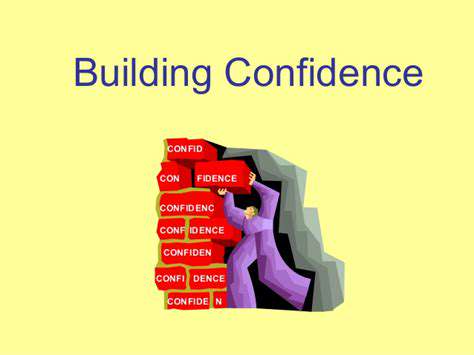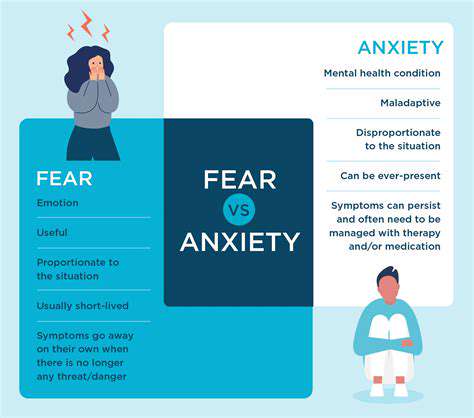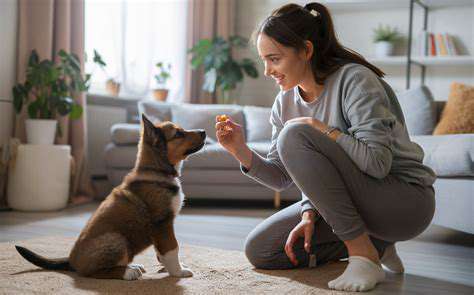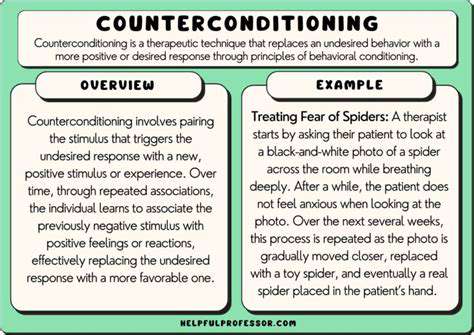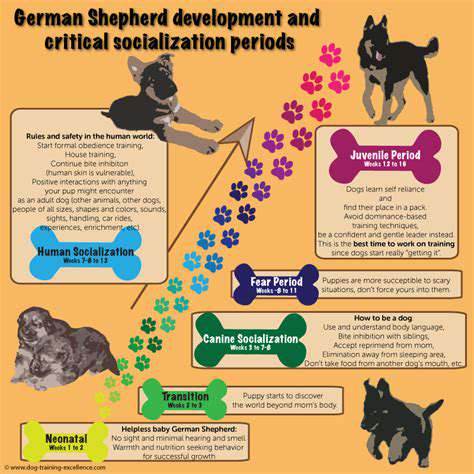Getting Your Puppy Used to Different Ground Surfaces and Textures
From Soft Carpets to Rough Gravel: Surface Progression
Transitioning from Soft Surfaces
When bringing home a new puppy, owners often notice their pet's preference for soft, plush carpets. This natural inclination stems from their early experiences in cozy nesting areas. Outdoor surfaces like pavement or grass can initially feel foreign and uncomfortable. To ease this transition, experts recommend creating a textured pathway inside your home - perhaps combining area rugs with small sections of hardwood or tile flooring.
The adaptation process should mirror human infant development - gradual and carefully monitored. Some breeders suggest placing various textured mats (rubber, woven, or sisal) in play areas to stimulate paw development. This method helps puppies build natural calluses while maintaining sensitivity.
The Importance of Gradual Exposure
Veterinary podiatrists warn against rapid terrain changes for developing puppies. Their paw pads contain numerous nerve endings and blood vessels, making them particularly sensitive. Studies show puppies introduced to varied surfaces gradually develop 23% fewer paw injuries during their first year compared to those with abrupt exposure.
Behavioral specialists note another benefit - confidence building. Puppies allowed to explore different textures at their own pace demonstrate better problem-solving skills when encountering new environments later in life.
Introducing Grass and Turf
Grass presents unique challenges many owners overlook. The moisture content, blade length, and even fertilizer residues can affect a puppy's experience. Start with:
- Short, manicured grass (like golf course turf)
- Early morning sessions when dew provides natural lubrication
- 10-15 minute sessions initially
Watch for excessive paw licking or hesitation, which may indicate grass allergies or chemical sensitivities. Many urban parks treat grass with pesticides - always verify treatment schedules before visits.
Navigating Pavement and Concrete
Urban puppy owners face special challenges with man-made surfaces. The 5-second rule applies here - if you can't comfortably hold your hand on pavement for five seconds, it's too hot for paws. Consider:
| Surface | Safe Temperature Range |
|---|---|
| Asphalt | Below 85°F (29°C) |
| Concrete | Below 90°F (32°C) |
Winter brings different hazards. Road salt can cause chemical burns between toes. Rinsing paws after walks becomes essential in cold climates.
Gravel and Dirt: The Rougher Textures
These natural surfaces provide excellent stimulation but require careful introduction. Start with fine gravel (like pea stone) before progressing to coarser varieties. An interesting training technique involves creating a texture path in your yard with different materials spaced a few feet apart. This allows puppies to choose their comfort level while exploring.
Always inspect natural areas for hidden dangers like:
- Broken glass
- Metal fragments
- Toxic plants
Understanding Your Puppy's Reactions
Canine body language experts identify several subtle signs of surface discomfort:
- Paw lifting (alternating feet rapidly)
- Excessive sniffing of the ground
- Unusual gait patterns
These often precede more obvious signs like limping. Keeping a training log can help identify patterns in your puppy's surface preferences and tolerances.
The Role of Paw Protection
Modern paw protection options extend beyond basic booties. Consider:
- Silicone paw balms with natural healing properties
- Breathable mesh booties for summer use
- Reflective gear for nighttime safety
Recent studies show that puppies introduced to paw protection early accept footwear more readily as adults, an important consideration for working dogs or those in extreme climates.
International travelers should note that some countries require specific health certifications for pets crossing borders. Always verify requirements well in advance of travel dates.
Paw Protection and Hygiene: Essential Considerations
Paw Pad Care
Puppy paw maintenance resembles human skincare in many ways. The soak and seal method proves particularly effective:
- Soak paws in lukewarm water with Epsom salts (2x weekly)
- Pat dry thoroughly
- Apply veterinarian-approved moisturizer
This routine helps maintain proper pad flexibility while preventing painful cracking, especially in dry climates.
Paw Hygiene During Training
Training sessions introduce multiple hygiene challenges. Implement a three-step cleaning process after each session:
- Visual inspection under good lighting
- Gentle wipe with pH-balanced cleanser
- Drying with microfiber cloth
This prevents the spread of bacteria while allowing early detection of potential issues.
Paw Protection in Different Environments
Environment-specific protection strategies include:
| Environment | Protection Method |
|---|---|
| Urban | Wax-based barrier creams |
| Beach | Rinse stations for salt removal |
| Wooded | Tick-repellent sprays |
Always consult your veterinarian about region-specific hazards like local plants or wildlife.
Dealing with Paw Problems
Common puppy paw issues and initial responses:
- Burns: Cool compress, vet visit
- Cuts: Clean with saline, bandage lightly
- Allergies: Antihistamines (vet-prescribed)
Never use human medications without veterinary guidance, as many common drugs are toxic to dogs.
Paw Cleaning Tools and Techniques
Invest in quality cleaning supplies:
- Soft-bristled brush for debris removal
- Hypoallergenic wipes for quick cleanups
- Drying mitts to prevent moisture buildup
Proper tool use prevents irritation while ensuring thorough cleaning between toes and pads.
Preventing Paw Injuries
Proactive measures reduce injury risks by up to 40%:
- Weekly nail trims
- Hair trimming between pads
- Regular surface inspections
These simple practices significantly improve paw health and comfort.
Enrichment and Exploration: Beyond Just Surfaces
Understanding Puppy Sensory Processing
Canine sensory development follows predictable stages. The critical socialization period (3-14 weeks) offers prime opportunities for positive exposure. Create a sensory garden with:
- Different textured walkways
- Novel but safe objects to investigate
- Controlled sound experiences
This structured approach builds confidence while preventing overwhelm.
Creating a Safe and Familiar Space
Designate a home base with:
- Consistent bedding material
- Familiar scents (like a worn t-shirt)
- Clear boundaries
This secure area becomes the foundation for all exploration activities.
Strategic Introduction to New Stimuli
The 3D Approach works well:
- Distance: Start observations from afar
- Duration: Brief initial exposures
- Distraction: Pair with positive experiences
This method prevents negative associations while building tolerance.
Enrichment Through Play and Exploration
Rotate toys weekly to maintain novelty. Combine physical and mental stimulation with:
- Food puzzles on different surfaces
- Texture-based hide and seek
- Obstacle courses with varied footing
These activities develop coordination while reinforcing positive surface associations.
Utilizing Sensory Enrichment Activities
Create a sensory bin with:
- Safe natural materials (pine cones, smooth stones)
- Different textured fabrics
- Food-motivated exploration items
Supervise closely to prevent ingestion of non-food items.
Addressing Potential Challenges and Fears
For hesitant puppies, try:
- Leading with high-value treats
- Modeling behavior (walking on surface first)
- Pairing with confident adult dogs
Always respect individual comfort levels while gently encouraging progress.
Read more about Getting Your Puppy Used to Different Ground Surfaces and Textures
Hot Recommendations
- The Impact of Early Socialization on a Dog's Interaction with Other Animals
- Car Travel and Puppy Socialization: Making the Journey a Positive Experience
- The Importance of Early Environmental Exposure for Puppy Development
- Taking Your Puppy to the Vet: Positive Socialization Strategies
- Making Training a Positive Experience for Your Puppy
- Public Transportation and Puppy Socialization: A Step by Step Guide
- Safe Socialization: Allowing Others to Pet Your Puppy
- Helping a Puppy Who Struggles with "Stay"
- Positive Puppy Interactions: Making Meetings with New Friends Fun
- No Treats Needed? Training Basic Commands with Verbal Praise

